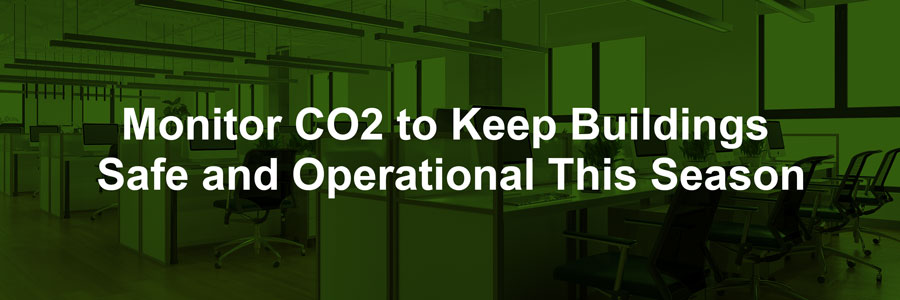
Monitoring carbon dioxide (CO2) is not a new concept for building automation and HVAC contractors. However, this task has entered the spotlight for a new reason: COVID-19. CO2 levels may be a relevant indicator of the potential presence of virial particles in the air.
With concerns about COVID-19 steadily continuing to grow, especially as we enter the holiday season, many customers continue to face the challenge of how to minimize the spread before it can wreak havoc in their buildings. Balancing safety and health with cost-effective solutions can sometimes feel impossible from your customer’s perspective. But as a contractor, being able to deliver both is paramount. CO2 monitoring is one important, and accessible, step.
In fact, a Virginia gym owner did just that. She prioritized safety and health for the members of her gym by working closely with one of her members who is a professor of civil and environmental engineering. Since the owner built the gym herself, she had all the engineering and HVAC documents to outfit her entire space following AHSRAE’s safety precautions.
She found out her hard work paid off after a trainer tested positive for COVID-19 and potentially exposed 50 athletes. Because of her precautions, not a single athlete contracted the virus. So, what did she do? She followed ASHRAE guidelines and calculated how much fresh air via ventilation was needed based on the building’s CO2 detector readings. She increased the amount of ventilation in her gym and kept strict watch over the CO2 sensors/detectors.
This goes to show just how important it is to have effective ventilation and CO2 sensors. Gauging occupancy is important in keeping your customers and their buildings safe and able to operate. It also lets your customer adjust their ventilation needs based on occupancy and therefore save money when occupancy levels coincide with lower levels of fresh air being needed.
An investment on the front end, while sometimes expensive, can help save money in the long run and help keep safety and health first. Two solid options are the Kele brand KCD Series and KCO2 Series. The KCD Series is great for a tight budget and has analog output only, whereas the KCO2 Series is a tad higher end due to its optional relay output, which is used in standalone applications where there may not be an automation system. The onboard relay is what opens or closes the damper (as opposed to the automation system).
Kele can help you regardless of your or your customer’s budget, and we offer a wide variety of high-performing CO2 sensors from several trusted brands in addition to the KDC or KCO2 if they don’t fit your needs. Call our sales team or technical service representatives today or browse our CO2 category on kele.com. (You can even chat with us via our Live Chat.) Kele can get you the parts necessary to help your customers keep their buildings safe and operational.
